What do you get when you combine a driving desire to create, a love for classic monster movies and a passion for puppetry? Well, this week, you get the gory, eerie and hilarious new independent feature Frank & Zed, which makes its World Premiere as part of the virtual NightStream horror film fest this week. The movie centers on two decrepit monsters whose zest for destruction is reawakened by a power-hungry lord, culminating in an “Orgy of Blood” between our inhuman heroes and the terrorized villagers.
It took Portland, Ore.-based filmmaker and puppeteer Jesse Blanchard six years to film Frank & Zed (seven to complete). Produced by Blanchard and animation veteran Evan Baily (Sonic Boom, George of the Jungle), The 93-minute flick came to life completely independently with a crew of just over 100 people, supported by crowdfunding, private equity and personal investment — a labor of love any mad monster creator could be proud of!
Blanchard was kind enough to give us a verbal tour of this ambitious production and share his passion, inspirations — and an explosive chemistry lesson for other puppeteers regarding hot glue and grain alcohol.
Frank & Zed premieres Saturday, October 10 during NightStream. (nightstream.org | Oct. 8-11)
Animation Magazine: How did you come up with the idea for Frank & Zed? Did you always plan for it to be a full-length movie?
Jesse Blanchard: The kernel of the idea just popped into my head: I knew there were two monsters in a symbiotic relationship where Frank would get brains for Zed and Zed was responsible for hooking Frank up to charge. I also knew that Zed was slowly falling apart because Frank was feeding him squirrel brains instead of human brains. Until one day…
The story did grow a lot from that first spark. Initially, it was just going to be a 15-minute short and you wouldn’t actually see the villagers. However, it quickly grew into a feature as I just had too much fun exploring the world.
What prior experience with filmmaking did you have going into such an ambitious project?
My day job is doing film, and I’ve also done a lot of creative work from start to finish. For me, it was this holistic knowledge of the process from beginning to the end that was critical. With puppets, for a character to enter a room, pick up a candle and blow it out is an incredibly complex sequence. So, knowing as a writer/director/puppeteer/editor how I could get all the elements to work together was invaluable.
That said, every day was a lesson in humility, because every single shot starts as a failure — I can think of only one or two that worked the first time, the other couple thousand are just soul-crushingly hard to make work. But, if you keep at it, you somehow manage. So, in that sense, stubbornness and idiocy were also crucial!
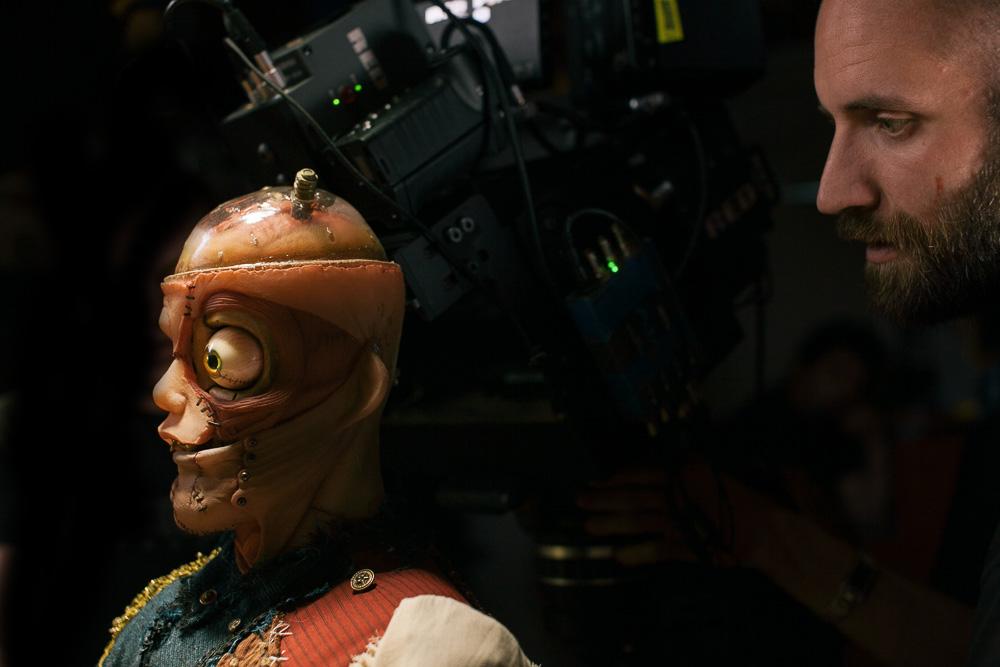
This movie took seven years to film and complete … what was the production process like over this long labor?
The film is so big and daunting, getting started sometimes feels impossible. Like, how do you make a forest that looks real? How do you make a practical God of Death puppet that doesn’t look completely stupid?
We average 11 shots per day, so you have to be incredibly focused because wasting even one shot adds 10%. So, for me, it was always a process of splitting my vision, keeping one eye focused on what we had to do that day — how do we get to 11 shots? — while also keeping the larger picture in mind.
One thing that helps is, I storyboard exhaustively; 98% of the set-ups are in the finished film. You can’t shoot coverage with puppets, it’s just impossible and it takes too long. Plus, we only have one of every puppet. So, when that puppet gets destroyed in the Orgy of Blood. There’s no going back!
So, literally the process was taking a couple thousands storyboards, putting them up on a wall and saying, “What 11 shots can we do today?” Then just tackling them one at a time … Fortunately, 99% of the work was done before COVID hit.
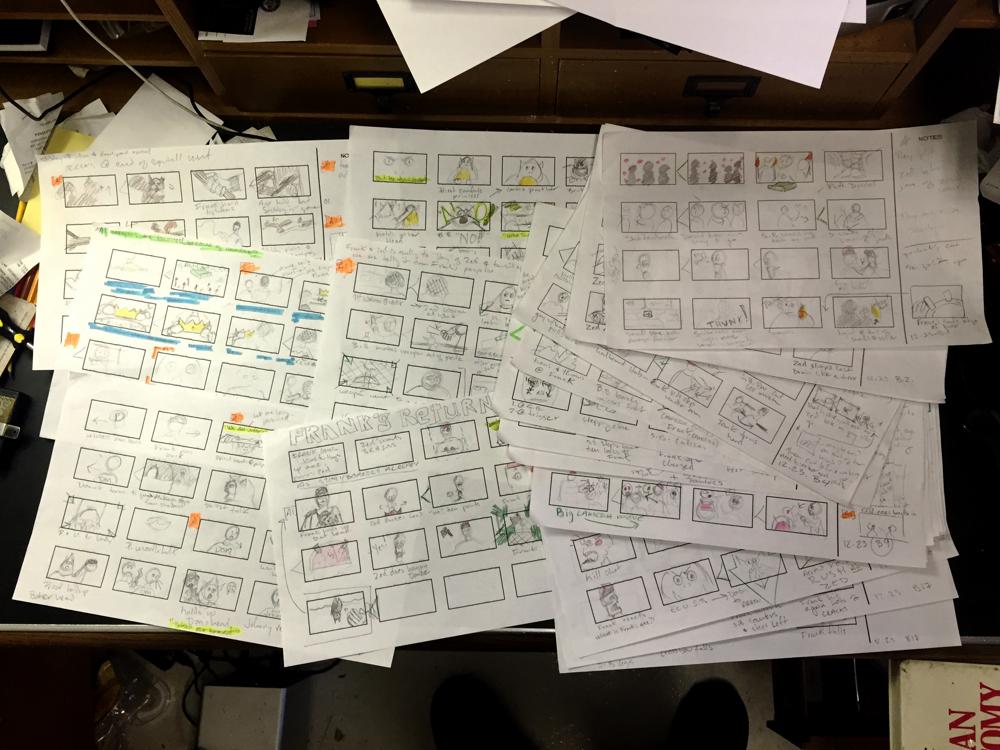
Why was it important to you to have all hand-made puppets, props and practical effects?
There’s lots of answers to that question! First, I made this film with puppets so I could make a puppet film! That’s a huge part of the reward — you get to do all these things. Second, my goal as a filmmaker is to entertain my audience; they are forefront in my mind at every step of the process. So, I hope the joy me and my incredible team have making all this stuff finds its way onto the screen and from there into the audience themselves. So, the hope is the process itself makes the movie better.
How were all these elements created?
Making all the stuff was, of course, a HUGE task. Frank and Zed were sculpted, cast and painted by Erin DeBray. He also did the Weapons of Power and other sculpted details. The felt puppets were all built by Jason Ropp. One of the things that I love about this movie is seeing these two very different styles crash into each other. I just love what both of these guys bring to the film. I did most of the set-building and mechanization, etc., as well as created all the practical effects elements. (The only puppet I built all by my lonesome was Grog, the 7-footer.)
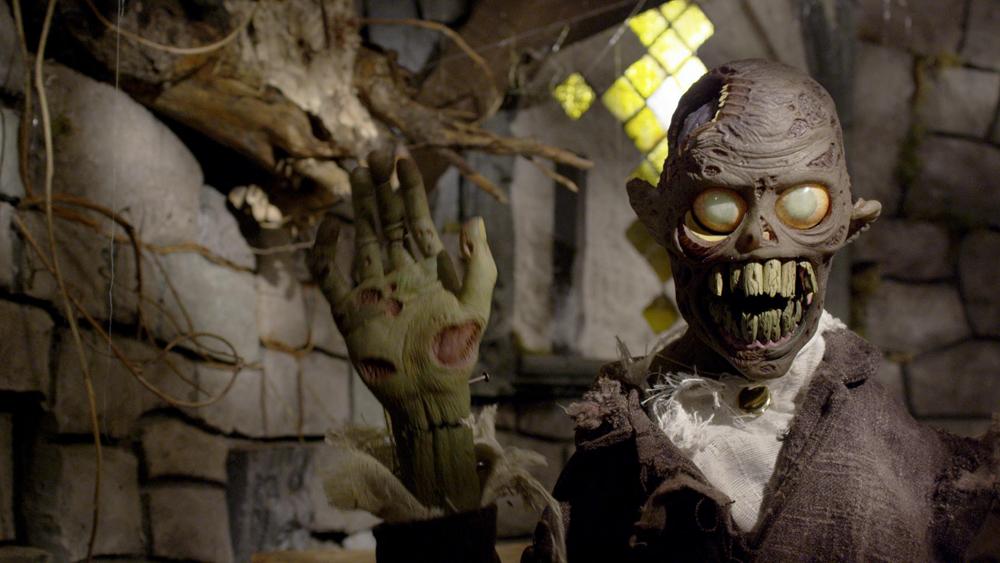
Beyond that, it’s also about creating an illusion, a fantasy. I felt that for it to be believable and to work together, everything had to be as real as possible. What’s amazing about practical effects is you get that reality instantly. You pay for it with set-up time and lots and lots of failure but, when it works, it’s so rewarding. I also knew I couldn’t compete with studio CGI even if I wanted to, so practical effects gave me the ability to deliver incredible effects with micro budgets. Lastly, the limitations of practical effects force creativity and spontaneity. It’s a strange combination of total control and letting go at the same time that can, with a lot of work, produce stunning results.
The thunderstorm was done using a salt-water tank. It takes four hours per set-up, you have to light and focus on something that is not there. Then you get one take and, if you get it wrong, it’s another four hours to reset. There’s no Control Z. There’s no undo. It’s reality.
That said, practical effects are also fun! We had a kiddie pool that the puppeteers would sit in because there was so much fake blood shooting out! It’s so stupid and silly you’re just laughing the entire time. The absurdity is overwhelming in the best possible way.

How did you get started in puppeteering?
I turned to puppets out of desperation. I was making films but couldn’t get what was in my head out onto the screen; it kept failing at the shooting stage. So I said, “What if I use puppets instead of actors?” I’d always wanted to do a barbershop horror short film. So, I tried one with puppets. The result was Shine, and it was so much fun, I never looked back.
Who are your biggest inspirations as a filmmaker?
Of course Jim Henson is the massive influence on Frank & Zed. However, it’s not just that he used puppets — it’s the way he treated them as real characters and the humanity of his work. There’s a warmth and a tenderness in everything that Jim Henson did that I have tried my best to replicate, even though I’m stuffing in a bunch of blood and gore. It’s a line that’s hard to articulate but feels very clear to me. That humanity, for lack of a better word, is what I find the most inspiring about Jim Henson’s work and what I tried my best to honor.
Next is Peter Jackson: the way he controls the camera and the incredible rhythm of his films is so inspiring, not to mention the humor, world building and a million other things. Playfulness.
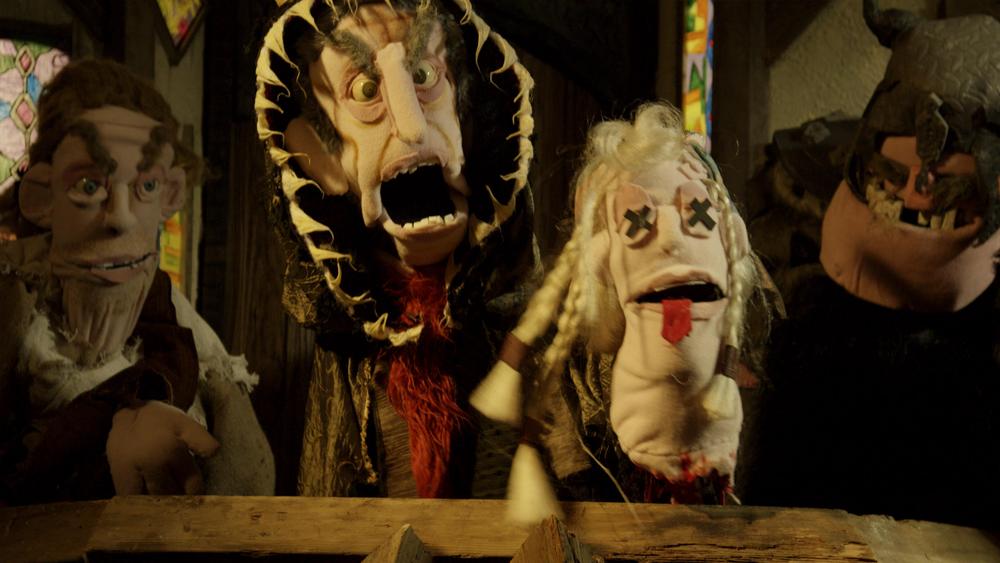
Lastly, Richard Taylor. He’s been such a huge inspiration. The passion and depth that he creates in his worlds is so incredible. In fact, I snuck his name into the set as a small homage to him. I have this fantasy that one day I’ll be able to give it to him. Beyond that, I really tried to create the same atmosphere on the production that it seems like both Sir Jackson and Taylor create in their work. I believe people do their best work when they are invested in the project and having fun, especially on tasks of this magnitude. That, maybe more than anything, was absolutely invaluable on this film.
I also have to give a shoutout to Satoshi Kon and specifically Paranoia Agent and Paprika. He shows unequivocally how powerful animation can be. A true master that set the bar so high, there’s a vast space below that I’m stretching up to try and fill.
What was the biggest challenge of making this movie?
Everything in the film was written specifically ignoring that it would be done with puppets. For instance, my two lead characters: Frank has water and a dome over his head and Zed has a huge hole in his head; these are both places where the puppeteer’s hand should be — they are terrible designs for puppets! But, I did that thinking we’d find a way.
Beyond that, with puppets, every single little thing is fake. And if even one little tiny thing is off, the illusion fails. So, if the puppets’ eyelines are correct but their wrist bends in a funny way or you see the puppeteer too much, the entire shot is ruined. The margin of error is razor thin for five or six things all at the same time, so getting the timing of all the elements exactly right, frequently with more than one puppeteer on a single puppet AND hitting focus marks, etc., is really hard. Then, once you get all that, you have to do it fast enough and make it entertaining, make it feel alive. That constellation of challenges is really tough.
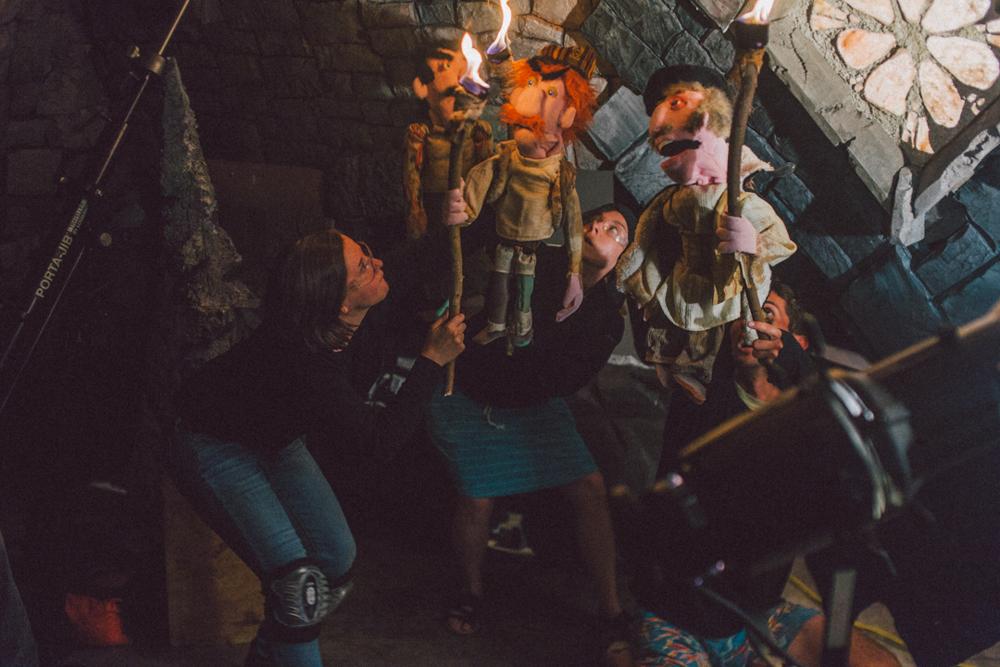
If you had to pick, what is your absolute favorite / craziest / most rewarding moment in the final film?
Honestly, the craziest thing for me is that I still love this movie. It’s bizarre that Frank and Zed and all the other characters feel real to me even though I was there every step of the way. I know they’re fake.
Beyond that, seeing the film with an audience for the first time was incredible. Especially with the cast and crew, many of whom had been on the film for so long and really had no idea what the film would shape up to be. Those experiences really trump all the many soaked in blood, gore and fire that contend for my attention.
… Although, we do have a fire-breathing puppet in the film, and we were using Everclear as the combustible. What I didn’t know at the time is alcohol is a release agent for hot glue, which is how we make a lot of the felt puppets. So, I’m up to my shoulder in this puppet, shooting out alcohol take after take, gradually soaking my arm, rushing to get the take as the puppet falls apart and then completely bursts into flames — which looks amazing! So, as they’re rushing in with the fire extinguisher I’m shouting “No! Keep rolling, keep rolling!” deathly afraid they won’t get the shot.
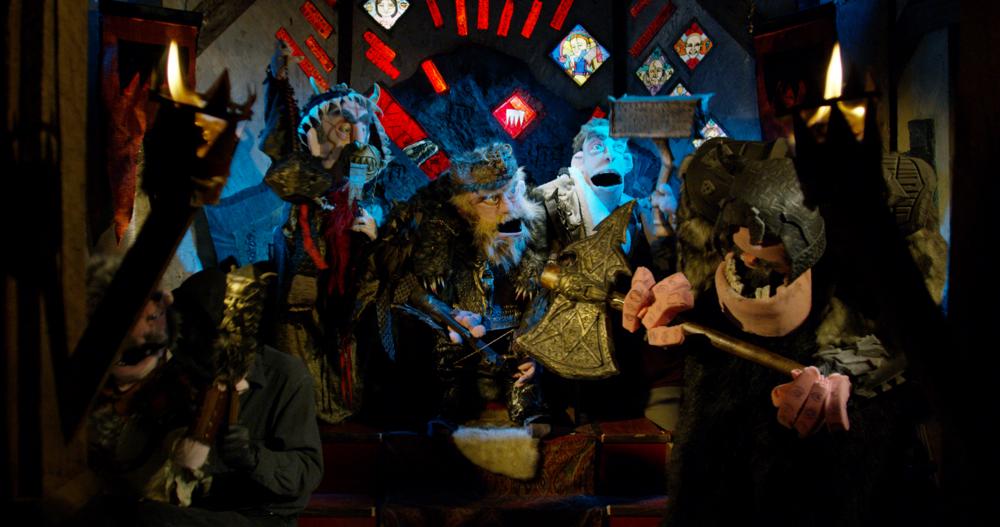
We often hear about a “hand-drawn Renaissance” or a “stop-motion Renaissance” — do you think we’ll see a puppetry Renaissance?
People want great stories and they want something different. At least I do. What’s great about all these different mediums is that they affect the process of telling the story. With puppets or stop motion, it’s so different from other mediums that it finds its way into the viewer’s experience. Some of the best moments are accidents or places where the puppeteer did something different than I expected, or what I wanted to happen was just failing miserably and a new, creative solution arose. For me, puppets are the best way to get what’s in my head out onto screen because it’s a combination of control and spontaneity that is so magical. As long as the process remains different, I can’t see it ever going away.
Now that it’s making its big virtual premiere, what do you hope audiences get out of the experience?
The number one thing I hope people get out of Frank & Zed is a good 90 minutes; I hope they get lost in this crazy little world and have a smile on their face. If an artist or storyteller saw the film and it encouraged them in some way to tell their own stories, that would be one of the biggest thrills I could have. Certainly, that’s what got me started, adding to that tradition in even a small way would be an honor.
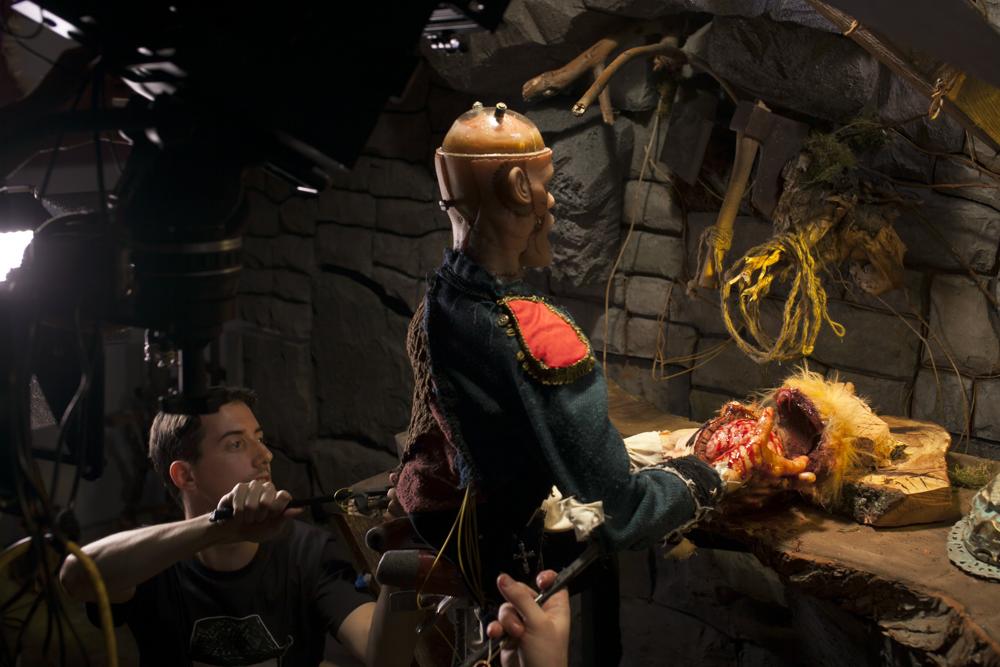





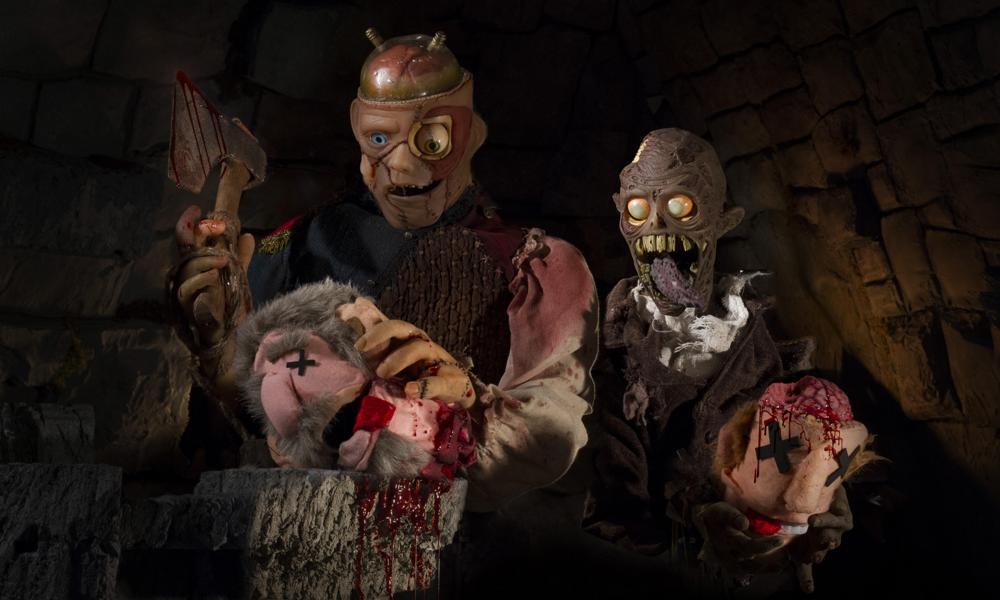


 Win a Funko X Lilo & Stitch Prize Pack!
Win a Funko X Lilo & Stitch Prize Pack! 


